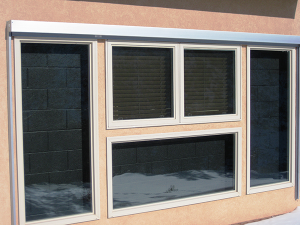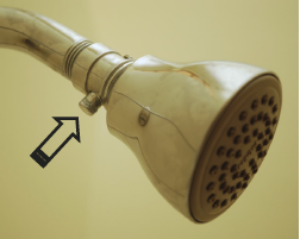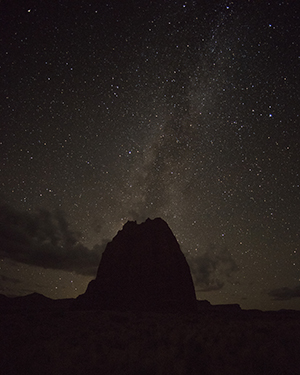Teaching our visitors environmental ethics is an important part of our mission. It’s also important to our partner, the NPS, that visitors leave with an enhanced understanding of the environment and how to protect it. Proper care of the environment influences virtually everything that we do at the Field Station, from the design of the buildings to the operation of the facilities, and even the way classes are conducted.
Visitors are quickly introduced to key concepts in sustainability and conservation during their initial orientation. They are informed of their water usage during and at the end of their visit, helping them remain aware of this precious resource. Additionally, prior to departure, visitors are informed of their total garbage production, which allows for further discussion of sustainability with respect to waste reduction and recycling. In particular, we seek to have a lasting impression on our visitors that will impact their lives well beyond the time they spend at CRFS.


The building design at CRFS makes use of simple physics to help warm and cool the buildings. To assist with winter heating, we employ trombe walls. Trombe walls are south-facing walls that have been painted black and sealed with a pane of glass 4-6 inches in front of them to capture the sun’s radiant energy. Heat is captured throughout the day and slowly conducts inward through the wall, even into the night. For the summer months, trombe walls are covered during the day with a solar shade to prevent heat absorption and uncovered at night to promote cooling. To further promote cooling during the summer months, the building design also includes solar chimneys, or “cooling towers.” Utilizing the principle of convection, solar chimneys allow warmer, more buoyant air to move up and out of the tower as cooler, less buoyant air filters in, creating a natural current. Surprisingly, without the aid of air conditioning, building temperatures remain relatively comfortable throughout the summer. Proper insulation, quality seals around door and windows, and a white roof that reflects sunlight also help in maintaining interior temperatures.
The buildings at the Field Station were constructed with south-facing windows situated high on the walls. These windows supply ample pleasant lighting throughout the day while conserving energy. Once the sun is down, we continue to save energy by using energy-efficient light bulbs.
Often people turn on a light or take a shower and never consider the origin of the resource or the process involved in getting it to them. At CRFS, we know exactly where our power and water come from. To power the facility we utilize solar technology. Our solar array is composed of 72 200-watt panels that generate up to 14.4 kilowatts of power. The solar array also provides covered parking, a luxury in our desert climate. The harnessed power of the sun is then stored in a bank of 48 batteries. To transform the energy into a useable form, four inverters convert the electricity from DC to AC. In the event we lose solar capability, CRFS has a propane-powered backup generator.

Water consumed at the Field Station is drawn from a well near Pleasant Creek, a perennial source that flows through the valley below. A solar-powered pump brings water to our on-site water treatment facility. To purify our water, CRFS uses a membrane filtration technique that uses several filters, including two nano-filters to ensure a quality product. The Field Station’s water treatment system is state licensed and operated by trained staff. Water is tested daily and meets or exceeds many operations found elsewhere in the state. A 10,000-gallon tank stores treated water for later use.

Interlocking permeable pavers have been placed around the buildings allowing precipitation to percolate into the soil. Permeable pavers allow for natural ground water recharge and discourage erosion. Also useful in urban situations, the pavers allow the topsoil to capture contaminants before the water returns to the environment.
At CRFS we save water with reduced-flow showerheads. The flow rate of these showerheads is 1.5 gal/min vs. 2.5 gal/min for a typical showerhead. Additionally, these showerheads have a button valve so you can switch off the water flow when applying shampoo, conditioner, or soap, or taking time to shave. To increase visitor awareness of water use, all faucets, toilets, and showerheads at CRFS have a label listing the flow rate in gallons-per-minute. This simple technique is often noted as one of our most effective and popular conservation strategies. In the kitchen, we conserve water while washing dishes by using three separate bins for washing, rinsing, and sanitizing. This allows washing to be done without constantly running the water.


The Field Station boasts a location in the Colorado Plateau with some of the darkest skies in the lower 48 states. To protect the dark-sky resource and the nocturnal species that live here, we strive to minimize light pollution. We do this by having low-wattage exterior lights that point downward. Further, all windows are equipped with blinds that are closed at night to minimize artificial lighting. Additionally, we have a 12-inch telescope that gives visitors an excellent opportunity to experience celestial objects and gain a greater appreciation of the precious, dark-sky resource.
In addition to these conservation practices we also follow the Leave No Trace principles.